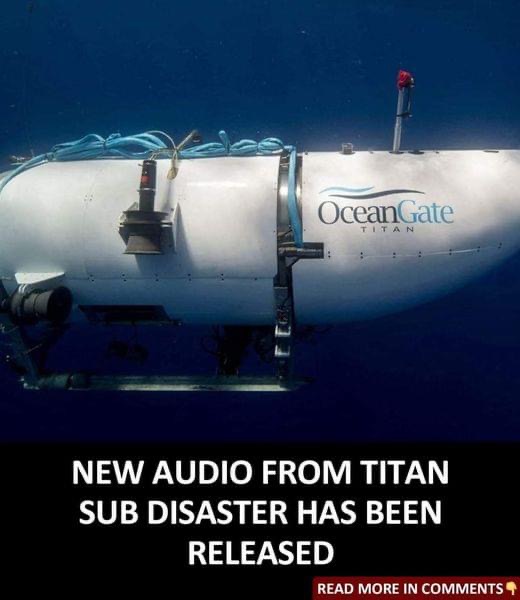In a recent documentary shedding light on the Titan Submersible Disaster, haunting audio recordings captured during search and rescue efforts have been released. Offered a glimmer of hope amidst the tragedy that befell the Titan and its crew.
Advertisement
It was only a year ago that tragedy struck for the Titan Submersible
Last year, tragedy struck the Titan, a submersible driven by OceanGate plunged into the depths in pursuit of the Titanic wreck. Onboard were Hamish Harding, Paul-Henri Nargeolet, Shahzada Dawood, Suleman Dawood, and OceanGate CEO Stockton Rush. However, on June 18th, contact with the vessel was suddenly lost, triggering an extensive search operation.
During the frantic search efforts, a rhythmic banging sound was detected, prompting speculation that it could be a distress signal from those trapped inside the Titan. The Canadian Air Force picked up these ominous sounds, occurring at 30-minute intervals, promoting less optimism among rescuers.
Nevertheless, experts warned against premature conclusions, stressing uncertainty about the origin of the mysterious noises. Subsequent revelations from the US Navy, suggested the Titan’s implosion shortly after contact was lost. Shattering hopes of a miraculous rescue. The banging noises, it turned out, were not signs of life but echoes of the sub’s fateful demise.
A documentary dubbed “The Titan Sub Disaster: Minute by Minute”
The forthcoming documentary, “The Titan Sub Disaster: Minute by Minute,” scheduled to air on Channel 5, meticulously chronicles the ill-fated dive and examines the aftermath. Aiming to glean valuable lessons from the loss of five lives.
The upcoming two-part documentary will not only delve into the Titan Disaster but also showcase seldom-seen footage from adventurer Arthur Loibl’s earlier Titan expeditions. Loibl holds the distinction of being among the pioneering individuals to journey to the Titanic wreck aboard OceanGate’s Titan submersible back in 2021.
In the documentary clip, Ryan Ramsey, a former Navy submarine captain from the U.K., reflects on the eerie nature of the sound, stating, ‘It sounds like it could be somebody knocking, the symmetry between those knockings is very unusual. It’s rhythmic, it’s like somebody is making that sound and the fact that it’s repeated is really unusual.”
An abysmal recovery as parts were slowly pulled from a watery grave
In the wake of the disaster, debris and human remains were recovered. Albeit in fragments, underscoring the unforgiving nature of the oceanic environment. Despite efforts to retrieve the victims’ bodies, the treacherous conditions posed formidable challenges.
In the aftermath of the tragedy, concerns arose regarding the safety of the Titan sub, spurring calls for reassessment. OceanGate, in response, announced the suspension of all exploration and commercial operations.
As investigations into the disaster continue, the story of the Titan Disaster serves as a sobering reminder of the perils that accompany deep-sea exploration and the imperative of prioritizing safety in maritime tours.
How can future Titan Submersible tragedies be averted?
In a conversation with NPR’s A Martinez, Stephen Flynn, a former Coast Guard officer and resilience expert at Northeastern University, discussed the implications of the Titan disaster for the submersible industry. The investigation into the tragedy, likely to involve multinational efforts, prompts reflections on regulating submersibles for safety. Drawing parallels to the Titanic’s sinking and subsequent maritime regulations.
